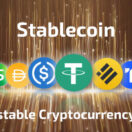Qtum’s blockchain is the first to utilize a protocol that incorporates aspects of the transactional models of both Bitcoin and Ethereum. This blockchain was developed with the intention of making it easier for corporations and enterprises to begin using blockchain technologies, with features like mobile compatibility, off-blockchain transactions, and integration with Ethereum and Bitcoin.
As of yet, blockchain has not been adopted for use en masse in the business world. Qtum hopes to change this by creating a user-friendly platform that is compatible with both the Ethereum and Bitcoin blockchains that can be used to create mobile applications and smart contracts.
Qtum also aims to create what it calls “Value Transfer Protocol”. Essentially, Qtum aims to allow businesses to “create [their] own tokens, automate supply chain management and engage in self-executing agreements in a standardized environment.”
Qtum’s mother organization, the Quantum Foundation, is based in Singapore, but hopes to become “the blockchain of China” and eventually a global technological leader.
QTUM Value, Market Cap and Volume
The Qtum ICO, which took place in March of 2017, was (at the time) a record-breaking event that shattered expectations. The first $10 million was raised in just 90 minutes, and the remaining $5.6 million was raised within 117 hours. 51 million Qtum tokens were sold in total.
During the Pre-ICO, the Qtum Foundation raised $1 million from a host of big names in Chinese business and crypto all-stars for the Qtum project. As these words are being written, Qtum has a market cap of $1,044,634,967, a circulating supply of 73,685,192 QTUM, and a total supply of 100 million coins. Since its introduction into mainstream trading spaces in May, Qtum’s value has fluctuated between ~$5 and ~$15 per token.
Qtum’s Backers
The Qtum project has an impressive list of early (pre-ICO) supporters that “are strategic backers as well as financial backers,” according to Patrick Dai, Qtum co-founder. Dai reported, “[Qtum’s] backers like the fact that we have taken into consideration what has and has not worked for blockchain technology…and they see us building from there.”
So far in the mix are a variety of blockchain and crypto vets, including Chen Weixing, founder of Kuaidi; Anthony Di Iorio, Ethereum co-founder and JaxxWallet CEO; and Jeremy Gardner, Augur co-founder. There are also a host of Chinese investors, including Xu Star (OKCoin CEO), Qingzhong Gao (Huawei Strategic Cooperation director), and Jehan Chu (Manahing Partner at Jen Advisors), among others.
How Qtum Works: The Innovation of Combination
Qtum was created with a kind of “best of both worlds” intention in mind–it uses the rock-steady stable Bitcoin Core protocol with the Ethereum Virtual Machine, which allows users to create and complete smart contracts. The two interact through the Qtum Account Abstract Layer, which transports code between the Bitcoin Core and the EVM. Essentially, Qtum is a user-friendly platform that can be used to create and execute smart contracts quickly and securely on desktop or mobile devices.
Qtum uses a “first of its kind” proof-of-stake algorithm consensus protocol, which it believes is better suited to the business world than the proof-of-work algorithm. According to its whitepaper, “blocks are usually forged, or minted instead of being mined, there are block rewards in addition to transaction fees and forgers receive a percentage of ‘interest’ for the amount of funds they stake.”
Smart Contract Integration
Qtum’s platform also integrates technology that allows smart contracts to be executed off of the central blockchain through Oracles and data feeds. This provides users with a couple of different advantages as opposed to, say, Ethereum–first, smart contracts can be completed quicker and with less computational energy (making it possible for smart contracts to be completed on mobile devices, for example).
Second, smart contracts can incorporate data that exists off the blockchain, such as a country’s GDP, current exchange rates, or weather data. Third, off-blockchain computations may provide users with a desirable level of privacy that wouldn’t be possible on the blockchain.
Qtum has the added advantage that its own blockchain and any applications derived thereof are compatible with mobile devices, making further decentralization of transaction validation possible. Using what it has termed the “Simple Payment Verification” (SPV) Protocol, transactions can be completed in real time (using little energy) with litewallets on mobile devices.
This is possible through the use of Bitcoin’s Unspent Transaction Output (UTXO) to run transactions. The Qtum Account Abstract layer acts as a go-between for Bitcoin Core and EVM that allows EVM to operate within a UTXO environment. Additionally, “Qtum comes coded with an automated, generic coin picking algorithm which allows contracts to ignore the UTXO mode of operation, while functioning normally, as if deployed in an account-based environment. This method is what enables Qtum to be compatible with pre-existing Ethereum smart contracts, allowing them to be executed on Qtum with little to no change to their code.”
So far, at least two Qtum-based mobile applications are in the works–Springemail (which provides users with the the ability to use their email as a wallet address to send and receive crypto tokens through) and Qloha (which allows users to send and receive crypto tokens through WeChat).
Future of Qtum
If Qtum manages to achieve its goals for mainstream adoption into the business world, there is no doubt that its value has the potential to skyrocket. However, it may be some time before the gap between blockchain technology and mainstream fintech is bridged. Even then, Qtum will have to prove itself as a viable and useful platform for corporations. That being said, Qtum’s list of backers and advisors is a good indication that this coin is going places.






